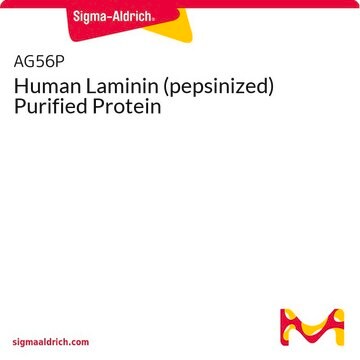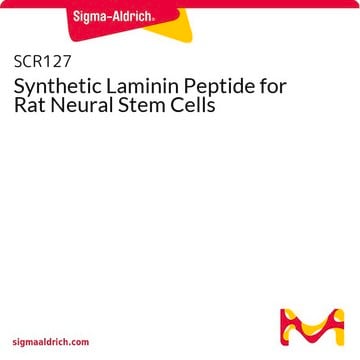L6274
Laminin from human placenta
liquid, BioReagent, suitable for cell culture
Sinónimos:
Cell culture grade laminin, Human Laminin
About This Item
Productos recomendados
biological source
human placenta
Quality Level
product line
BioReagent
form
liquid
concentration
0.5 mg/mL in Tris-buffered saline
technique(s)
cell culture | mammalian: suitable
surface coverage
1‑2 μg/cm2
UniProt accession no.
shipped in
dry ice
storage temp.
−70°C
Gene Information
human ... LAMB1(3912)
Application
Biochem/physiol Actions
Components
Caution
Preparation Note
Storage Class
10 - Combustible liquids
wgk_germany
WGK 3
flash_point_f
Not applicable
flash_point_c
Not applicable
Certificados de análisis (COA)
Busque Certificados de análisis (COA) introduciendo el número de lote del producto. Los números de lote se encuentran en la etiqueta del producto después de las palabras «Lot» o «Batch»
¿Ya tiene este producto?
Encuentre la documentación para los productos que ha comprado recientemente en la Biblioteca de documentos.
Los clientes también vieron
Artículos
Cancer stem cell media, spheroid plates and cancer stem cell markers to culture and characterize CSC populations.
Protocolos
Coating surfaces with laminin for culturing cells requires specific conditions for optimal results. Protocols for coating coverslips to culture neurospheres and general cell culture are included.
Nuestro equipo de científicos tiene experiencia en todas las áreas de investigación: Ciencias de la vida, Ciencia de los materiales, Síntesis química, Cromatografía, Analítica y muchas otras.
Póngase en contacto con el Servicio técnico








